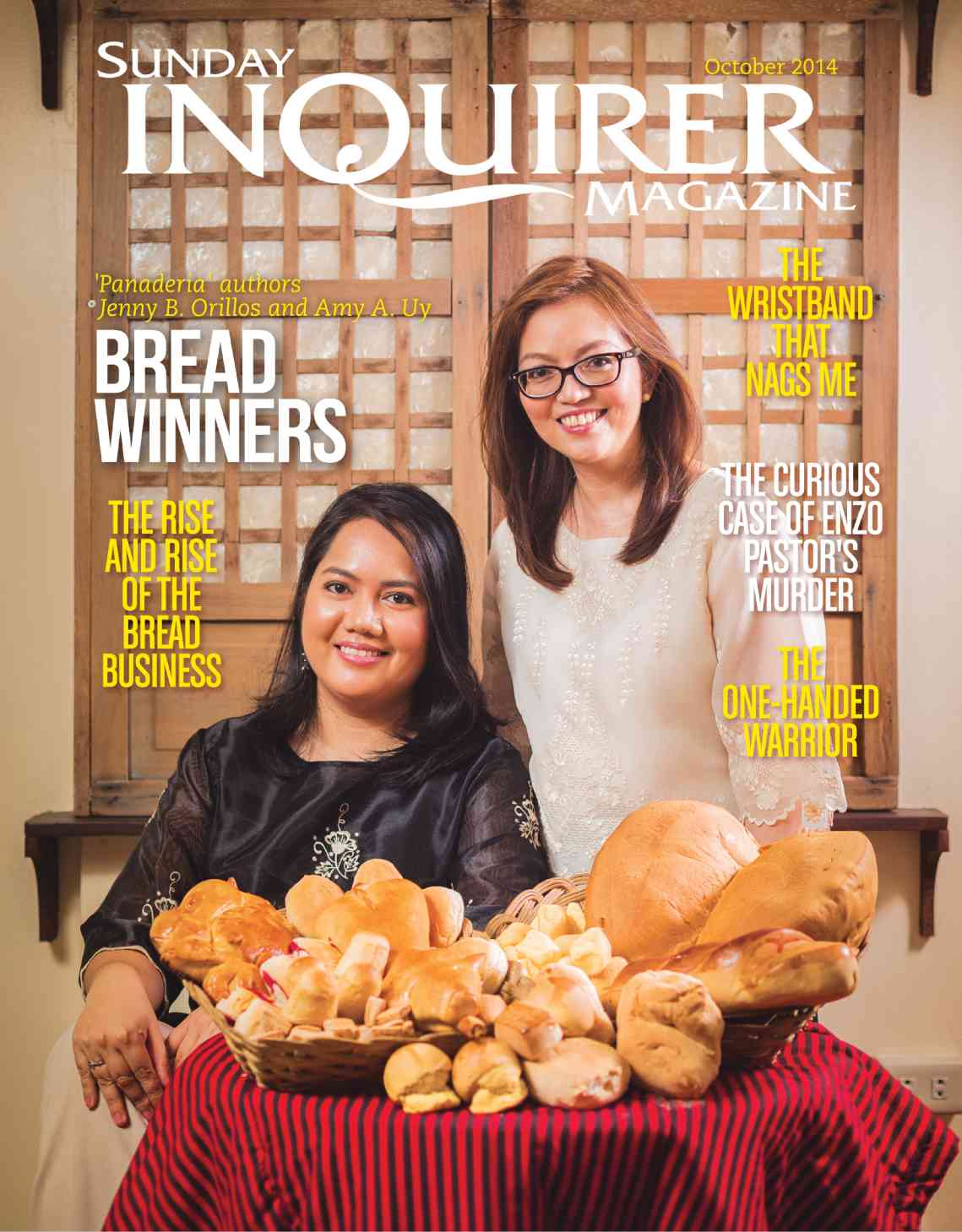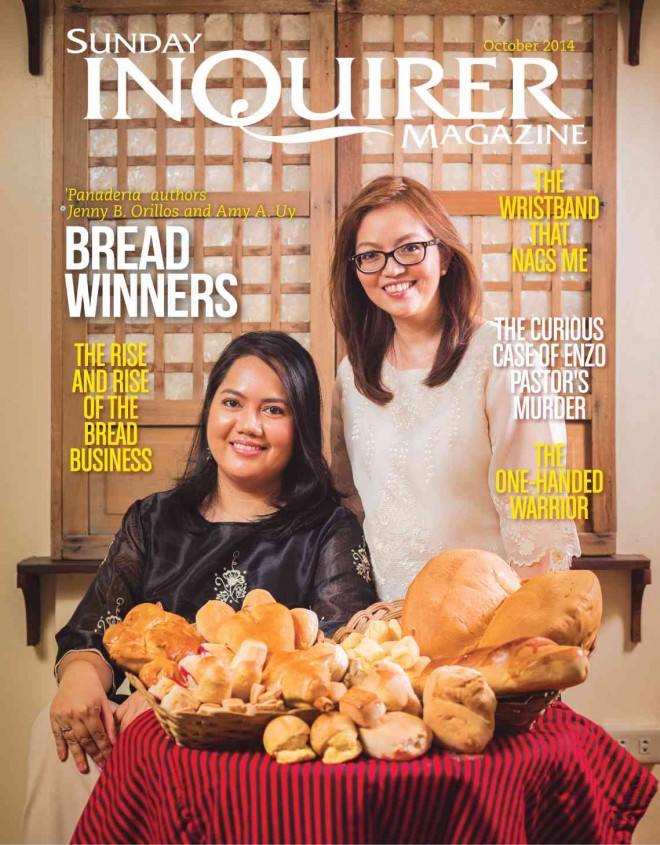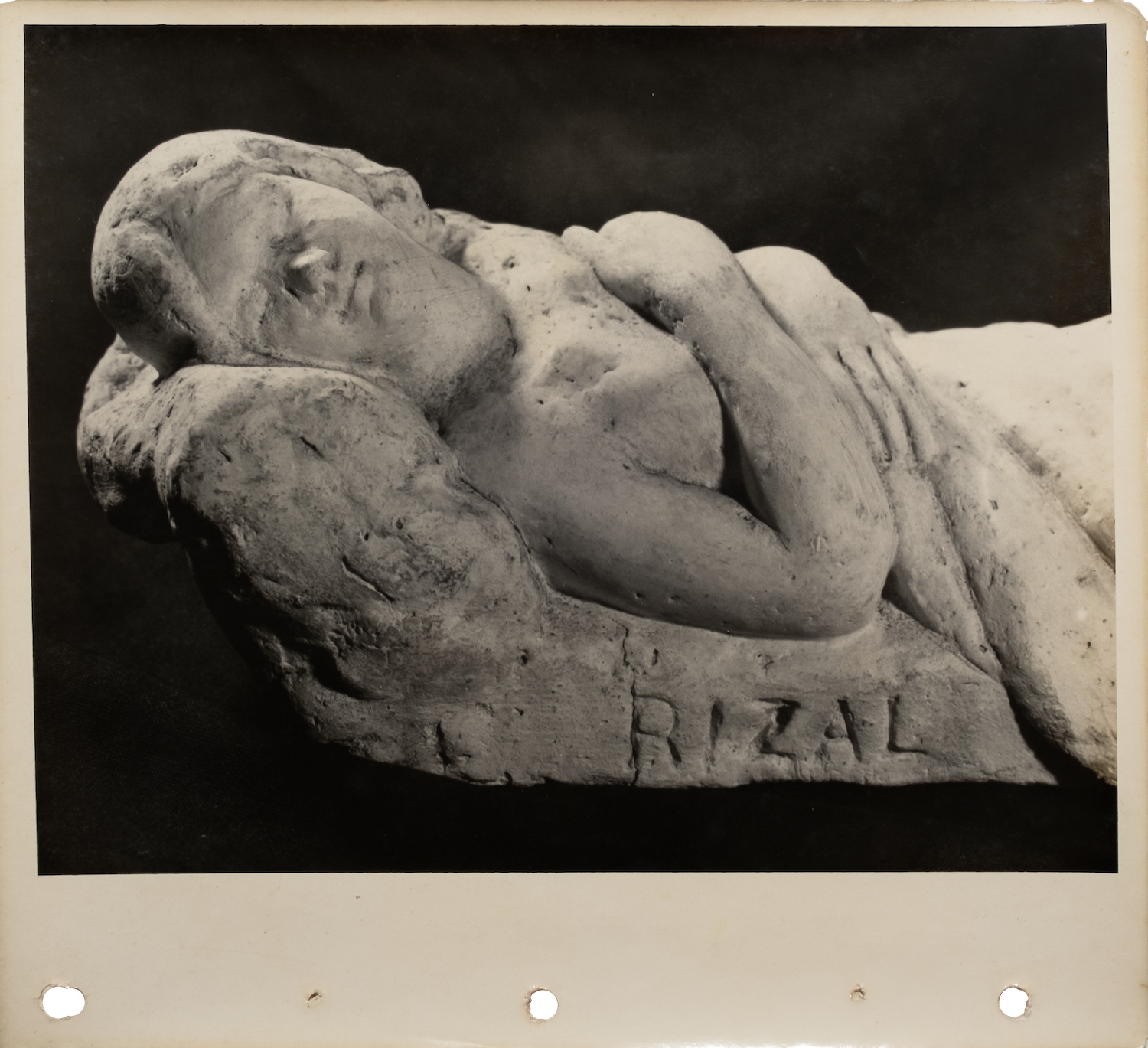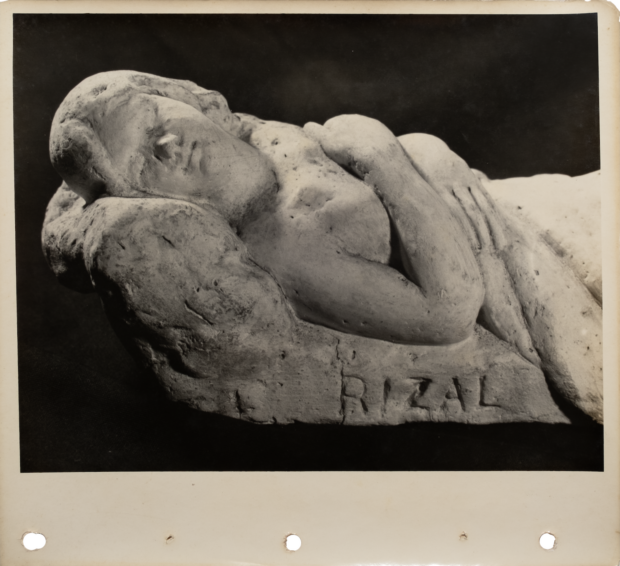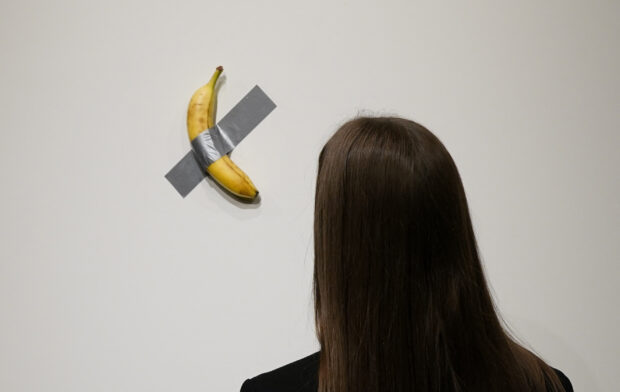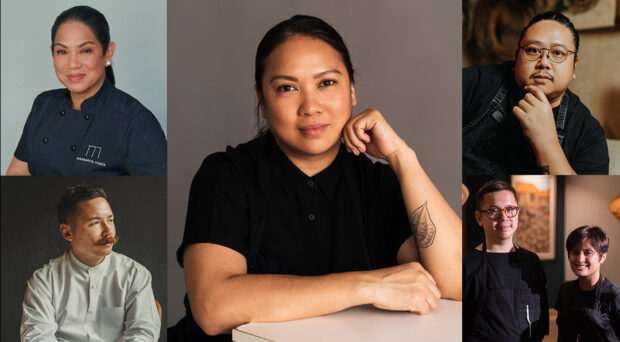The afternoon air is heavy with the distinctively sweet scent of bread. In a basket on a table is a dizzying array of breads, enough to feed a Filipino family for a week. The baked goods come in all shapes and sizes. There is a giant conjoined pair of monay, huge as a person’s buttocks. There are breads in the shape of a lechon and the form of a crab. Scattered around are pieces of egg pan de sal, little golden drops of cooked dough. Visible in the pile are the bonnet-shaped goodies called, of course, pan de bonete. There are examples of the dense pan de sal de suelo, among others. Placed together, they threaten to overwhelm the senses: How can there be so many kinds of bread in one place at one time?
The lot, all native Filipino bread, has been gathered by Jenny Orillos and Amy Uy, food writers who can identify each kind of bread by name and point of origin. After all, Orillos and Uy have scoured the archipelago in search of them.
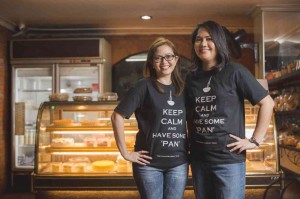
That pilgrimage for bread lovers was for the book “Panaderia: Philippine Bread, Biscuit and Bakery Traditions,” the definitive guide to the country’s breads, out later this year from Anvil Publishing, Inc. Before World Bread Day on October 16, Orillos and Uy have come to talk about this unique project and the work that went into it.
They each approached bread from their own directions.
Jenny B. Orillos, 37, is the eldest of four girls born to a hotel bellman and his wife, a government hospital employee. “My grandmother would gather all the leftover pan de sal of the day and make bread pudding,” she says of her most powerful bread memory. Naturally drawn to writing, Orillos graduated from University of the Philippines Manila, major in Philippine Arts and worked as a cultural researcher with the National Museum. She then worked as a lifestyle journalist for a broadsheet where she gravitated towards writing about food. “I requested that I do reviews of restaurants,” she recalls. “And that’s how I started as a food writer.” Today, she still does food writing as a freelancer.
Honorena “Amy” Avendaño Uy, 50, is the youngest of four siblings whose father, a Philippine Army colonel is, coincidentally, married to a governmental hospital employee. “(I remember) being sent to the panaderia along our street and hated doing it because there were a lot of kanto boys along the way,” Uy recalls. “So I hated it, being sent to buy pan de sal.”
In grade school, she had pan de sal every day but she hid it, “since it was the humbler bread compared to the tasty of my classmates.” Uy majored in broadcasting at UP Diliman—graduating cum laude—and worked in various capacities for GMA 7 for 20 years. “It became too routine for me,” she remembers. The mother of two gave up her corporate job to run their family food business, which operates Philippine fast food outlets in different malls. She runs it with her husband Huntley Uy. Looking for something else to do in the meantime, she too took up food writing.
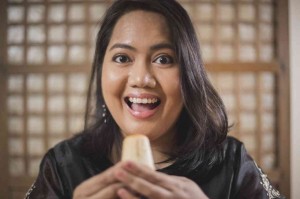
Orillos and Uy’s paths would converge when they both joined the Doreen Gamboa Fernandez Food Writing Award competition in 2008. Fernandez (1934-2002) was the country’s most respected culinary scholar who wrote a very popular food column for the Philippine Daily Inquirer called “In Good Taste.” After her death in 2002, the Doreen Gamboa Fernandez (DGF) Food Writing Award was established to continue to inspire Philippine food writing. In 2012, Anvil Publishing released the book “Savor The Word: Ten Years of the Doreen Gamboa Fernandez Food Writing Award.”
Orillos wrote about her grandmother’s bread pudding while Uy decided to write about her father-in-law’s batchoy place on a year when the competition’s theme was merienda. “It was something that felt natural and I wanted to do something beyond what I was doing,” Orillos says. They both won; Orillos took second prize and Uy finished third.
Orillos and Uy met for the first time at the awards ceremony and both attended the food awards the following year. Both were then writing for Food Magazine and keeping in touch. In 2012, Uy broached the idea of doing a book together, originally about kakanin (native rice desserts), but the subject soon shifted to bread. Recalls Orillos: “We agreed on doing the book about bread because it was something that hadn’t been done before.” Though there had been a smattering of essays about bread, there was no single, definitive volume on Philippine bread tradition.
Thus was born “Panaderia,” the book named after the local bakery. But like any baking project, it would take a while for the dough to rise.
The venue for this conversation fits the narrative. Orillos and Uy are at Kamuning Bakery, the famous home of the pan de sal de suelo and a heritage bakery founded in 1939. Located on the corner of Judge Jimenez and K-1st Streets, the bakery recently changed ownership, with businessman/journalist Wilson Lee Flores buying the majority share of the bakery. You can, of course, read all about it in “Panaderia.”

With no outside funding, the two writers began planning their bread odyssey in 2012. To keep the costs down, they planned way in advance and booked the cheapest rooms they could find. It took two years of traveling from north to south to complete their journey.
Orillos and Uy would travel from town to town, eating the bread offerings at local panaderias and quizzing the bakers as well as the owners. They would only stop for typhoons and the 2013 elections. Each trip was different. A swing through Pampanga took just three days. A swing through the Samar-Leyte-Cebu loop took three weeks. It helped that they already knew which panaderia to go to and who to ask. “We looked weird because we were traveling through these towns, lugging all this bread owners would give us,” Orillos says. “Then we would give them away,” Uy adds. They were welcomed wherever they went and Uy remembered how the bakers were happy that someone cared about what they did.
There was also the caloric challenge. Orillos and Uy had to sample all the bread, resulting in weight gain. Admits Uy: “We were very slim when we started.” The saturation point came in Iloilo, because there were so many bakeries in the province. Luckily, there were cakes and pastries that provided variety, and which also found their way into the book.
Such marbled marvels the two women unearthed. “What really surprised us was the variety of it all. In Manila, you just encounter pan de sal. While traveling, we discovered all these variations, shapes, flavors, names.” The Kalihim is sometimes called pan de regla or pan de red, but in Bicol, it’s Maligaya and in other places, it’s identified with the unsavory reputation of loose women. (For a selection of the more fascinating breads the writers had encountered, please see sidebar.) Additionally, most bakers in the province have been making bread not usually found in Manila.
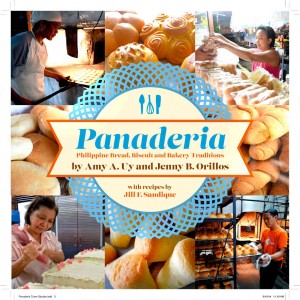
“We were also impressed by the creativity of the bakers.” Each bread held a story. The bakers were craftsmen, finding artistic expression with dough and adapting their creations to the market. “They also have an innate knowledge of knowing what will sell,” Orillos says.
Wistfully, Orillos and Uy realized that some of the local breads were no longer being baked and are now lost to history, save for the locals’ memory. A very good example would be the Nutribun, which was ubiquitous in the 1970s. Then there is the Rosario, Cavite bread called pan de troso, which was like a long uncut pan de sal. Most fanciful but also lost is the pan de Nora from Iriga, which was a bun with a beauty mark, like the Superstar has.
But bakers continue to innovate, giving bread a more modern touch. Orillos notes finding in the Ilocos region a round bread called Dragonball, named after the anime series “Dragonball Z.”
Getting “Panaderia” in the oven was easier said than done. Orillos and Uy originally tried writing it as they went along, but more information kept being added so they decided to write it after the trip. “The writing was the most difficult part,” Orillos admits. The two divvied up the chapter between them and got cracking. “We had to sit down and recall everything,” Uy says, adding it took most of a year to actually get the manuscript done. Like a baker working over the dough, Orillos and Uy slaved over the text. “We had to make it entertaining otherwise it would be full of just memories,” Orillos says. “We wanted readers to understand our bread tradition.” This meant including recipes and the bread lexicon for identifying the breads. Orillos’ research background gave her a good eye for detail that complemented Uy’s copywriting and TV background. It was a massive undertaking yet again. Luckily, the two found that their chapters melted together. They also had a lot of help.
Noted food writer Micky Fenix served as the book’s editor and actually provided many of the contacts for the trip. Renowned baker Jill Sandique gave them the selected basic recipes. “We felt the book would be more valuable with recipes in it,” Orillos explained. Rafael “Pie” David, whom they had worked with at Food Magazine, accompanied them on the trips and provided the photographic evidence. Respected food historian Felice Prudente Sta. Maria wrote the book’s introduction.
The finished product was bigger than what they originally had in mind, Uy says. “From a collection of bread memories, it became a documentary,” she says. “My concern then was that it would come out as a textbook. Instead, it’s the first book of its kind, so we really needed to make it very comprehensive and detailed so that everything you want to know about Philippine breads was there.”
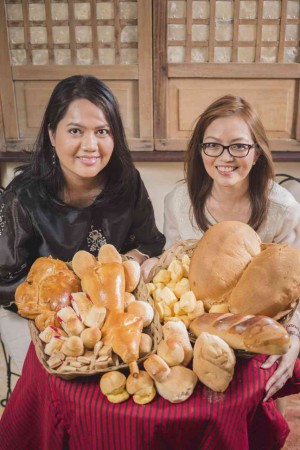
Earlier in the year they finally turned over their manuscript to Anvil Publishing. “Panaderia” offers up, piping hot, a readable history of bread in the Philippines as well as its role in our society. This large book also features breads and bakeries from different regions, as well as recipes for the most important ones. Sandique even had to reverse-engineer the recipe for pan de regla; she had recipes for the others.
Says Fenix: “While there have been some books that have recipes of Filipino breads, ‘Panaderia’ is the first to document the traditional bakeries in the country as well as the traditional breads and biscuits. No one has done this yet. While we all know the breads within our neighborhood, town, city or province, we aren’t really aware of those out there in the other provinces and regions.”
Anvil publishing manager Karina Bolasco echoes this thought: “Our image of a panaderia is it’s dark, hot and has two or three shirtless men who push the big tray of dough back and forth into the wood-and-brick ovens. But the generation that remembers that will soon be gone. Even if rice is our staple, our affinity with pan de sal marks us as Filipinos.” Bolasco says “Panaderia” will have an initial print run of over 1,000 copies. “But it will be around for a long time,” she adds.
Orillos and Uy are also excited about the different audiences their book intends to reach: culinary students (who will carry on the cooking tradition), home bakers (and those who appreciate breadmaking), foodies (who like food literature), the older generation (who will reminisce) and even overseas Filipino workers looking for a piece of home and an opportunity to build a business. Additionally, Orillos and Uy are the first DGF Food Writing Award winners to publish a book of their own.
“When we started the DGF Food Writing Award, the aim was to have food writers who would follow in the footsteps of Doreen and Gilda (Cordero Fernando) and other noted writers,” says Fenix, who is chair of the awards committee. “And now here they are—with the same passion for research and documentation. There are others out there like Margaux Salcedo and Joy Subido.”
Orillos and Uy stand ready to do their part. The two continue to write for magazines. A collector of cookbooks, Orillos already has another book out, “Leaping Off the Page: How To Write Better Descriptions” with Carlomar Daoana. It seems also quite fitting that Uy’s two children have taken up different aspects of her own path: 27-year-old Justin works in broadcasting and 25-year-old Nicole is a baker. They of course have plans for more books, though they are still mulling over exactly what to write about. “Of course, it will be about food,” Orillos says.
With the invasion of so many imported breads through international franchises and the Filipinos’ obvious taste for them, Uy says there is the danger that these breads will swallow up our own. “That’s exactly why we chose bread as a topic in the first place,” she says. “As long as there is someone writing about these local goodies, then hopefully the bread tradition will be carried on.”
Fenix believes traditional,breads will win out: “Replacing our bread with varieties from foreign countries may be true in urban Metro Manila but go to the provinces and the traditional breads are still being made, being bought, being eaten. I don’t think this will happen soon. Though I do hope those breads will be there forever.”
 As old-fashioned panaderias have all but vanished, so have the all-important pugon ovens and the distinctive breads that came out of them. In fact, some of the bakeries the two authors wrote about in “Panaderia” may no longer be there in a few years. Many of the heirs of the bakeries no longer want to take on the back-breaking work of running the family business, says Uy. “They would much rather be employed in other businesses.” So the bakeries fade away. “But there are those who continue to run bakeries because of the memory of their grandparents and how the bakery had once sustained their family.”
As old-fashioned panaderias have all but vanished, so have the all-important pugon ovens and the distinctive breads that came out of them. In fact, some of the bakeries the two authors wrote about in “Panaderia” may no longer be there in a few years. Many of the heirs of the bakeries no longer want to take on the back-breaking work of running the family business, says Uy. “They would much rather be employed in other businesses.” So the bakeries fade away. “But there are those who continue to run bakeries because of the memory of their grandparents and how the bakery had once sustained their family.”
The need to keep the bread tradition alive—and for people to continue to write about food with a historical and scholarly approach—may be partly answered by a multitude of popular food blogs around, but there remains a need for projects like “Panaderia.”
“I may be out of touch but I think bloggers never ask the question why,” Fenix explains. “They document in photos and captions but they never go deeper. Books last forever. A blog may be there forever but the interest dies down as soon as it is read.”
Orillos adds: “The blogs have a very personal take, but we want to write about other aspects of food like anthropology and history. Food is just the lens you view your culture through.”
Through “Panaderia,” Jenny Orillos’ and Amy Uy’s words will be baked into memory. As the day goes on, Kamuning Bakery is besieged by customers of all sorts: clearly affluent older women who come with maids, helmet-clad messengers on motorcycles picking up something literally for the road, boisterous, uniformed teenage high school students gabbing while grabbing something to eat. From behind the lit counter, bread appears again and again.

